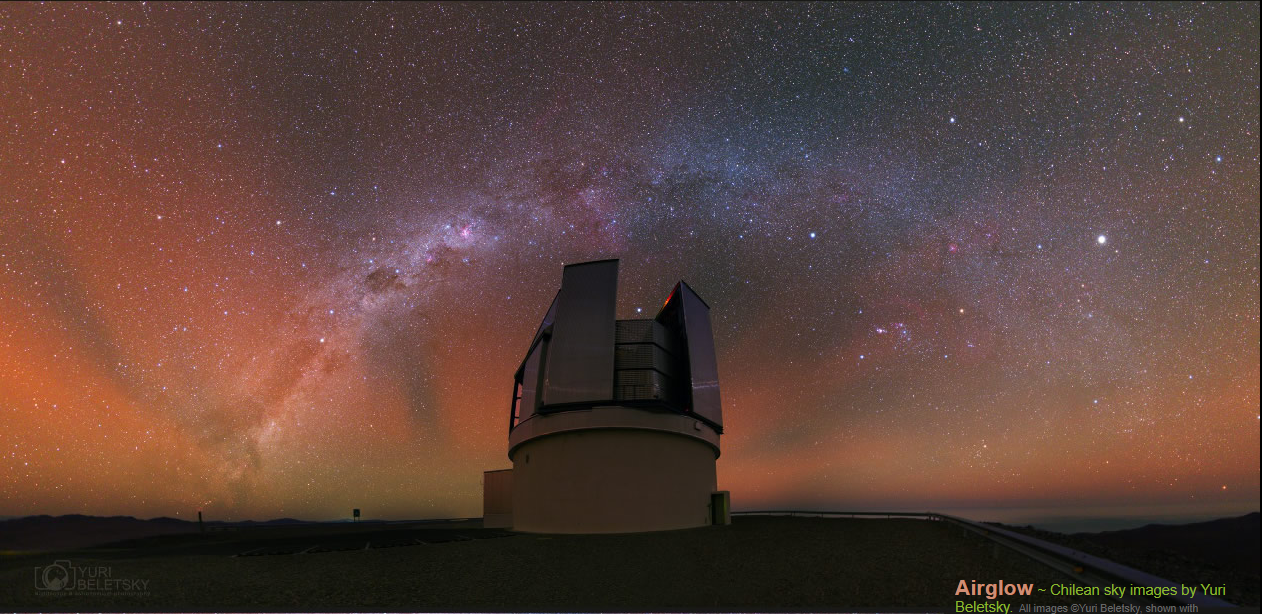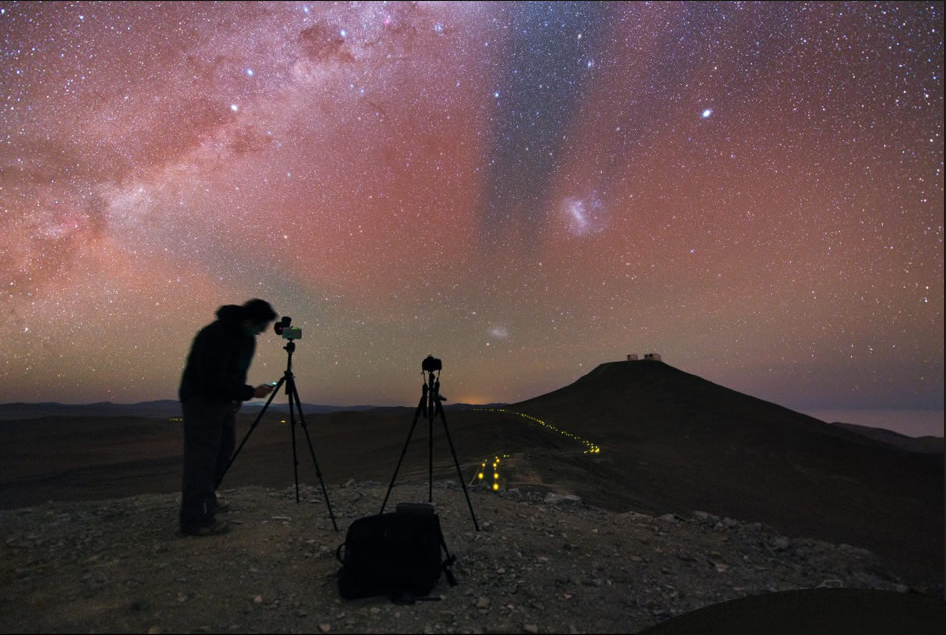Airglow, Atacama Desert, Chile - OPOD
Airglow, Atacama Desert, Chile - OPOD: A Phenomenon Illuminating the Night Sky
The mesmerizing beauty of the Chilean sky is often adorned with a celestial spectacle known as airglow. Captivating images taken by Yuri Beletsky showcase the ethereal glow that blankets the Atacama Desert, specifically over the Paranal Observatory. This natural phenomenon, characterized by banded red oxygen and occasional green oxygen emissions, paints the heavens with its radiant hues.
Unveiling the Enigmatic Bands of Airglow
The Paranal's 4m VISTA Visible and IR Survey Telescope stands witness to the dominance of banded red oxygen and OH airglow in the night sky. These luminous bands cast an otherworldly glow that seems to converge towards a point to the left of the Paranal telescopes. In reality, these bands are colossal parallel structures located approximately 90 kilometers above the Earth's surface in the thermosphere.
The Dance of Gravity Waves and Airglow
The mesmerizing movement of the airglow bands throughout the night is a result of gravity waves propagating upwards from disturbances lower down in the atmosphere. These waves, whose wavelengths can span thousands of kilometers, increase in amplitude as they travel higher into the thermosphere. The resulting reduction in density creates a captivating display of light that captivates observers.
Pervasive Beauty and Inescapable Airglow
While strategic placement of telescopes can optimize viewing conditions and mitigate human light pollution, airglow remains an ever-present phenomenon in the night sky. Its ethereal radiance bathes celestial objects in a gentle glow, lending an enchanting quality to astronomical observations. Even at remote locations such as the Paranal Observatory, airglow's omnipresence is a testament to its enduring allure.
The Chromatic Symphony of Airglow Emissions
The dominant emissions that contribute to the captivating airglow spectacle are primarily green atomic oxygen, which occurs at an altitude of 90-100 kilometers, and red oxygen emissions found at higher altitudes ranging from 150 to 300 kilometers. Additionally, hydroxyl radical emissions from a thin layer approximately 86 kilometers high are present, albeit weaker and less frequent.
A Glowing Horizon at Carnegie Las Campanas Observatory
At the Carnegie Las Campanas Observatory, airglow adds a touch of enchantment to the horizon. Against the backdrop of the two impressive 6.5m Magellan telescopes, the luminous glow at the horizon creates a surreal ambiance, enhancing the experience of stargazing and astronomical research.
Embracing the Wonders of Airglow
Airglow is a natural phenomenon that captivates both astronomers and sky enthusiasts alike. Its awe-inspiring displays of color and luminosity are a testament to the dynamic nature of our atmosphere. As we gaze upon the night sky, we are reminded of the intricate dance between atmospheric disturbances, gravity waves, and the resulting ethereal glow that bathes our world in its celestial radiance.
References:
- Original article: Airglow, Atacama Desert, Chile - OPOD

Airglow ~ Chilean sky images by Yuri Beletsky. All images ©Yuri Beletsky, shown with permission
Top:Banded red oxygen and perhaps OH airglow dominates the sky over Paranal's 4m VISTA Visible and IR Survey Telescope. Some green oxygen is also there.
Left: Red banded airglow silhouettes the Cerro Paranal VLT platform. The Large and Small Magellanic Clouds shine through the glow.
The bands resemble crepuscular rays in appearing to converge to a point to the left of the Paranal telescopes. Their movement through the night is in this time-lapse video.
The bands are are actually huge parallel structures in the thermosphere 90 km upwards. Perspective makes them appear to converge.
Gravity waves propagating upwards from disturbances lower down in the atmosphere are likely the source of the bands. The wave amplitude increases with height (reducing density) and wavelengths can be thousands of kilometres.

More bands across the Paranal VLT sky.
While telescope placement can optimise seeing and avoid (to a decreasing extent) human light pollution, airglow is all pervasive.


The dominant airglow emissions are usually green atomic oxygen (90-100km) and red oxygen at 150-300km. Hydroxyl radical emissions from a thin layer 86km high are weaker and rarer.
Lower: Airglow at the horizon at Carnegie Las Campanas Observatory. In the foreground are the two 6.5m Magellan telescopes.

Note: this article has been automatically converted from the old site and may not appear as intended. You can find the original article here.
Reference Atmospheric Optics
If you use any of the definitions, information, or data presented on Atmospheric Optics, please copy the link or reference below to properly credit us as the reference source. Thank you!
-
<a href="https://atoptics.co.uk/blog/airglow-atacama-desert-chile-opod/">Airglow, Atacama Desert, Chile - OPOD</a>
-
"Airglow, Atacama Desert, Chile - OPOD". Atmospheric Optics. Accessed on April 19, 2024. https://atoptics.co.uk/blog/airglow-atacama-desert-chile-opod/.
-
"Airglow, Atacama Desert, Chile - OPOD". Atmospheric Optics, https://atoptics.co.uk/blog/airglow-atacama-desert-chile-opod/. Accessed 19 April, 2024
-
Airglow, Atacama Desert, Chile - OPOD. Atmospheric Optics. Retrieved from https://atoptics.co.uk/blog/airglow-atacama-desert-chile-opod/.